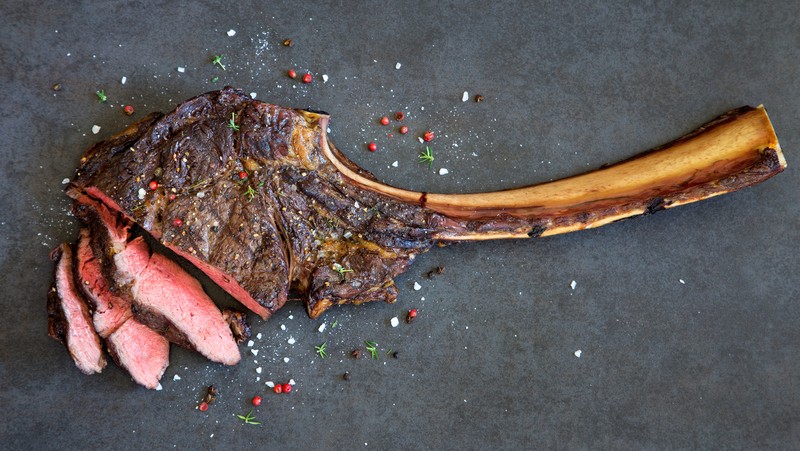In the carnivorous wonderland of delectable cuts, few stand as boldly as the esteemed Tomahawk steak—both in stature and reputation. With its visually striking appearance, characterized by an elongated rib bone, this cut has given rise to a plethora of facts and myths that swirl around, influencing the perspectives and expectations of avid steak enthusiasts.
Let’s delve into three truths and misconceptions surrounding this revered piece of meat.
Reality #1: Origin and Anatomy
Born from traditional butchery techniques, the Tomahawk steak is essentially a ribeye with an extended rib bone, a distinctive feature setting it apart. This bone-in presentation harks back to primal methods, enhancing flavour during cooking. While the elongated bone adds visual appeal, it also influences taste and tenderness by shielding some meat from direct heat, creating a unique cooking dynamic.
Although the impressive bone can contribute to the steak’s cost, steakhouses like some good ones in Singapore are known to opt for the short-bone version to ensure customers get more meat and less bone.
Misconception #1: Bone Solely Defines Flavour
A prevalent myth suggests that the extended rib bone solely defines the Tomahawk steak’s flavour profile. While the bone imparts subtle nuances, factors like beef quality, aging process, and cooking technique play equally crucial roles. The marbling of the beef, seasoning, and grilling expertise all contribute significantly to the steak’s taste.
Reality #2: Cooking Method and Preparation
Another truth about the Tomahawk steak relates to its cooking process. Despite its formidable appearance, it follows basic grilling or searing principles. Due to its thickness, achieving the desired internal temperature while maintaining a well-seared crust can be challenging. Many chefs advocate for a two-step process—initially searing over high heat and then finishing at a lower temperature to achieve the desired doneness without overcooking the exterior.
Misconception #2: Best Enjoyed Rare
A prevailing myth suggests that the Tomahawk steak is best enjoyed rare or medium-rare. While some prefer these levels of doneness for tenderness and juiciness, this cut’s beauty lies in its adaptability. Whether rare, medium, or well-done, the Tomahawk steak offers a spectrum of flavours and textures, catering to individual tastes without compromising its essence.
Reality #3: Size, Presentation, and Social Experience
The Tomahawk steak isn’t just known for its taste but also its size, often weighing several pounds and capable of serving multiple people. The grand presentation and communal aspect of sharing this substantial cut enhance the dining experience, making it a focal point for social gatherings.
Misconception #3: Exclusive to Special Occasions
Despite the misconception that Tomahawk steaks are reserved for special occasions, their rising popularity has made them more accessible. No longer confined to high-end restaurants, these steaks are found in local steakhouses and home kitchens. They can be enjoyed on various occasions, transforming an ordinary meal into a memorable feast.
By debunking the myths surrounding Tomahawk steaks, we shed light on their true nature and culinary potential. Recognizing that the bone isn’t the sole contributor to flavour allows consumers to appreciate the pivotal roles played by beef quality and cooking techniques. Moreover, their accessibility beyond exclusive settings underscores their versatility, turning ordinary meals into remarkable dining experiences. Embracing these realities unveils the true essence of Tomahawk steaks—a cut that transcends myths, offering a blend of visual splendour, diverse flavours, and enjoyable dining experiences for all to savour.








